DAY 1
DAY 2 Part One
DAY 2 Part Two
We checked out of Sheraton Krabi in the morning and headed towards Surat Thani. Not before we dropped by the Marine Fish Centre, a fish conservation project by HRH King Bhumipol. The project’s conceived to counter over-fishing in the country.
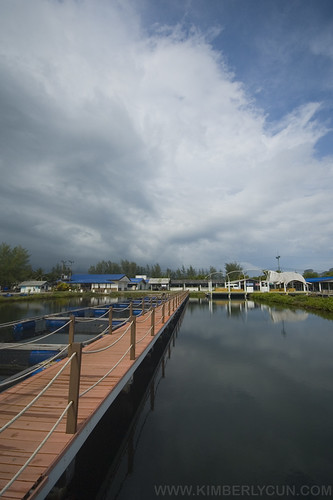
Bridge.

Looming storm.
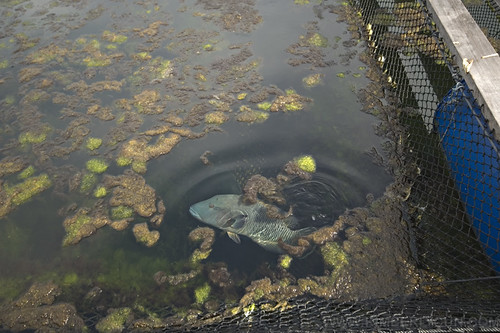
Humphead fish.
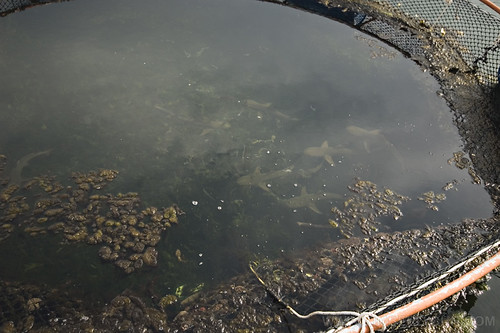
Small sharks.
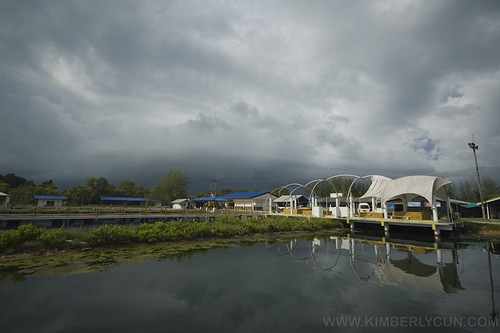
Another view of the centre.
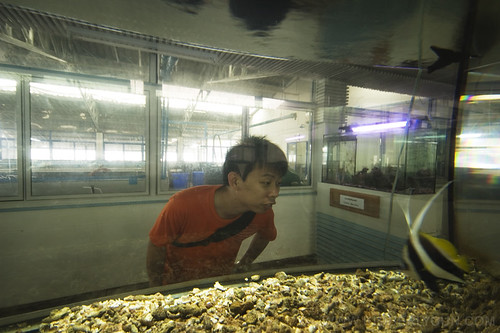
KY scaring the angel fish.
I think the conservation project is really cool and a noble initiative by the Thai King. If only our government were more environmentally conscious.
We proceeded on a 1.5 hour journey towards south, to Taha Resort for lunch. We were apparently the first Malaysian tourists to have set foot in the restaurant. It’s a quaint little establishment built overlooking a small river. Very nice atmosphere and excellent food! We had authentic southern Thai food.
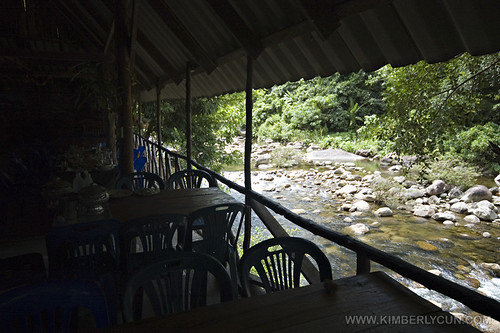
Taha Resort.
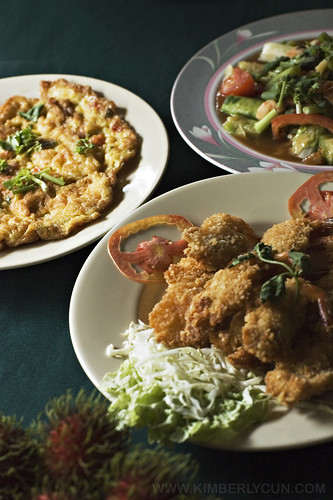
Lunch.
See Tho also taught me how to eat durian with piping hot rice. It was orgasmic :)
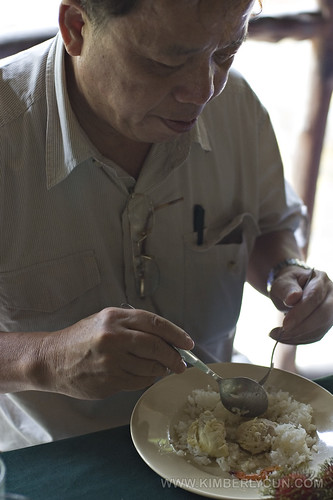
See Tho demonstrating the way to eat durian with rice.
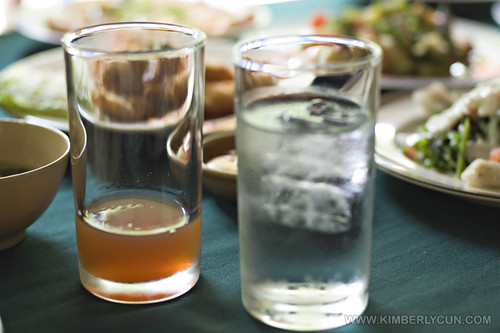
Mangosteen wine on the left.
After lunch, we decided to check out a Kiriwon village which is inhabited by the Ban Khiri Wong community. According to this website:
The village was faced with catastrophe on November 21, 1988 when a flash flood swept away some 100 houses. The local monastery and villagers still maintain the damaged convocation hall and houses as monuments to those who perished. Ban Khiri Wong is considered a prototype of eco-tourism management and the place won the 1998 Thailand Tourism Award in the city and community category.
So after the catastrophe, the villagers had to find new means of living. Being the innovative people that they are, they discovered various ways of using mangosteens and other fruits besides gobbling them up. Well, they turn them into soaps and dye!
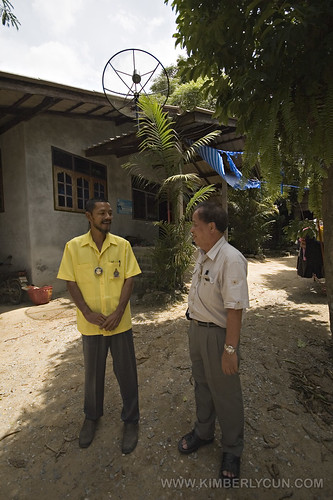
Owner of soap factory and See Tho.
The owner demonstrated the process of making mangosteen soaps and it was really impressive as there was no cooking of any sort. First, he mixed palm oil nuggets with mangosteen juice (derived from the skin) and other herbal juices. Then he mixed and compressed them further and finally, he moulded them into soaps.
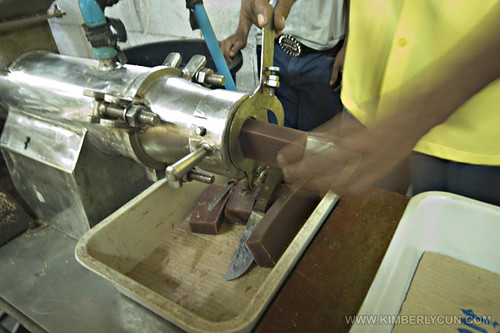
Making mangosteen soaps.
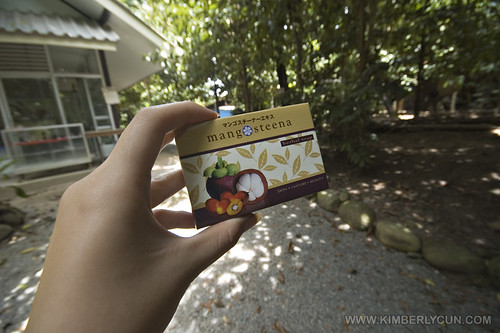
Final product.
Apparently, it’s a very good soap for people with acne problem, eczema and sensitive skin. Personally, I have eczema problem but have yet to try the soap (still in the box), so when I have, I’ll definitely post about my experience with it.
We were given an amulet as a parting gift. Such a nice gesture :)

Amulet.
After checking out the soaps, See Tho brought us to another place where fabric dye is made with mangosteens. Before this trip, I had no idea that there are so many uses for mangosteens! I’m very impressed with the people of Kiriwon village.
The dyed fabrics are reminiscent of the 60s tie-dye but more subdued. This is how they dye the fabric (pure cotton):
1.

Clothes pegs are used to peg certain parts of the fabric to form desired patterns.
2.

Fabrics cooked in the dye prepared with mangosteen essence.
3.
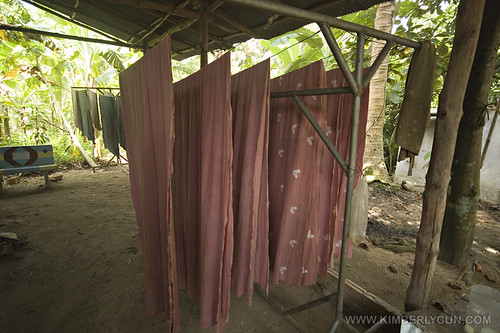
Finished product.
I bought a gardening hat, a pair of fisherman trousers and a bag made with the dyed fabrics. All for less than RM500 baht. Support the local businesses, eh!
We left Kiriwon village for another destination, but I’ll leave that for another post under Day 3 Part Two. Sorry it’s a little too long already!